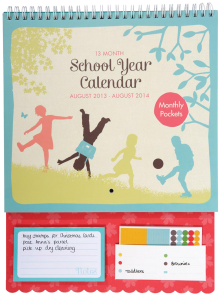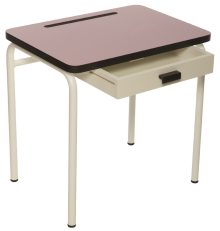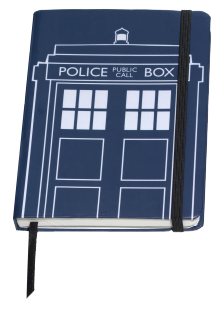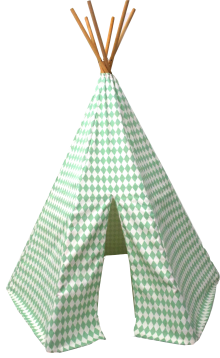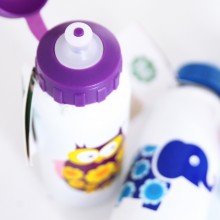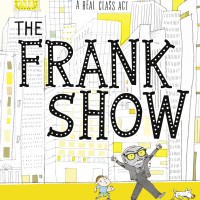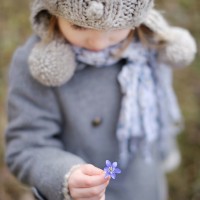A is for ALPHABET It doesn’t matter what age or stage your child is at, there is always something new you can do with an alphabet – the key is to identify your child’s current passion, whether that’s dinosaurs, flowers, princesses or pirates, and turn it into some alphabetically awe-inspiring. We are working on a few of our own here at MLSF, so for a mini zoologist take a look at our A to Z of Where The Wild Things Are.
B is for BICYCLE Hopefully you’re lucky enough to be merely a short walk from your child’s school, which means you can ditch the car and opt for a fun way of getting there. Scooters, roller skates and skateboards are all a brilliant way to spark off a day of creative genius for your super cool school, but nothing really beats a bike, and for the littlest of school goers, a balance bike may be the perfect way to start.
C is for CALENDAR How on earth else are you going to keep up with all those burgeoning dates? Meet the Teacher nights, Home & School, the annual Concert, an that’s not counting birthday parties, playdates, doctors appointments, outside school classes and bill paying dates. No wonder we feel a little fraught – who can possibly keep the information in check? Put it on the calendar and a plan of action is laid out before you. So, before the year drifts away in a hopeless state of chaos, get out that calendar and write it all down.
D is for DESK We love the newfangled classroom designs that oust traditional ‘desks all lined in a row’ in favour of beanbags, booths, tents and inflatables (rooms that is). But back home, a space where a flourishing scholar can do a little DIY study at their very own desk might be just the thing to inspire a little pride and focus. Besides being a dedicated ‘thinking zone’ it keeps those books and papers clear of a sibling’s curious hands, and might just save your child from really truly meaning the words “the dog ate my homework!”
E is for EMERGENCY It will only take 10 minutes at the start of the year to list down all those essential numbers you need in case of an emergency – from the school principal to the baby sitter, your dentist to the nearest emergency department. Once the family chart is in order, make sure your school has all the up to date contacts on your child’s registration. Of course Murphy’s Law insists that if you take the time to do this, no emergencies will surface, so that makes it well worth the time invested!!
F is for FRIENDS Those first few days at school can be incredibly hard for first timers with all the routines to learn, rules to abide by, teachers to get to know and friends to make. Even the most confident of children can feel overwhelmed when faced with a sea of new faces, so give them a few tactics for breaking the ice during those first few weeks. If possible, arrange individual playdates in those first few weeks with two or three of the children who seem to be forming the best attachment with your child. After all, strong friendships are brilliant for building your child’s self esteem and are a huge plus to their everyday happiness quotient.
G is for GAMES After all, games are not only lots of fun but they can also help your child learn anything from writing letters to a new language, mathematics or even the periodic table and they have the added bonus of helping your child learn about how rules work. Whether it is super duper quality toys that nurture your child through imaginative play, outdoor games that encourage coordination and motor skills, or board games that require waiting to take turns and coping with losing, they all add up to big wins in the classroom where all of these skills will come in to play.
H is for HOLIDAYS Holidays are a brilliant antidote to a tough term at school – and they can be just as brilliant at home (where your child’s imagination can flourish away from the routines of the classroom) or away. Whichever way, three things that make it really feel like a holiday are: Great books for holiday reading and apps for travelling or rainy days, a plan of activities to ensure those precious days don’t disappear in a blur, and a new game that you can learn – as a family.
I is for INTRODUCTIONS You will probably get to meet your child’s teacher even before the first school bell rings, but it’s also a great idea to introduce yourself to a few of the less-visited people who feature throughout your child’s school day. Drop in to the reception desk and say hi to the school secretary, head to the library and find out something about the school librarian, check in with the tuck shop lady who will manage your child’s lunch orders and even say “Hi” to the janitors – you never know who might become your child’s saviour in a troubled moment.
J is for JELLYBEANS Well, this is not so much about real sugary jellybeans and more a metaphor for special ‘spark-me-up’ treats – surprises that your child can discover in their school bag to pep them up when they’re having a difficult day. It could be a favourite toy that happens to stow away in their bag one day, a couple of favourite cookies your child can enjoy at lunchtime, a photo of a favourite pet that greets them when they open their school homework folder, or even notes from a fairy – who might even pop a wand into the bag to sprinkle some magic into their day.
K is for KINGPIN There will often be a kingpin or a queen bee in your child’s class – sometimes they’re quite simply the most popular kid in the class, other times they might make it difficult for other children to participate fully in classroom or playground activities. Either way, it’s useful to know who the kingpins and queen bees are and to give your child some ideas for dealing with them if they find themselves in a tricky situation.
L is for LUNCHBOX Good grief – who knew that a lunchbox could be such a minefield of possibilities – and potential mishaps! But there are so many cool ones to choose from these days… just take a look at our 12 We Love: Cool Stuff for School. Of course, the number one factor to consider for a school starter is that your child will have to be able to open it – by themselves. So whatever design you choose, just be sure to test it out with your pupil-to-be. Number two factor is the menu you intend packing into the lunchbox. Of course, ‘back in our day’ we all survived on a sandwich, a piece of fruit and a snack, but these days parents go wild with everything from sushi to quesadillas, stir-fries to curries. But for these to work in your child’s favour (and not end up a mushy mess in their school bag), you really will need to be quite specific about the design of your child’s lunchbox.
M is for MATHS You might be a whizz with numbers. Then again, you might (if you’re anything like me) have put aside certain numerical skills, like evaluating logarithms and identifying congruency in isosceles triangles, in favour of other endeavours. So you’ll be super excited to be getting a second chance to grasp those concepts a second time around. Of course, you could just introduce a little numeracy using a clock to schedule the school run and pocket money for doing it all without complaint. (Seriously, who makes it through parenthood without a little bribery up their sleeve?)
N is for NOTEBOOKS Inspire some perfect penmanship with a notebook that motivates your little scholar. Whether it’s decorated with robots, princesses, the big top or ponies, having a book that reflects your child’s passion can make a big difference to make their mark upon it or not.
O is for ORGANISATION Being organised is more than half the struggle when it comes to smiles or screams on the school run (for both parent and child!). Some ideas we love are: Day of the Week drawers – so you always have the kids’ gear organised and ready for each of the days of activities (from choir to swimming, craft to athletics), Morning Routine posters with each of the tasks your child is responsible for before you head to school listed out (with pictures) so they can take action, and a ten-minutes-before and five-minutes-before departure alarm on your phone that has a different sound, so your child is aware of exactly how soon you will be leaving without you having to keep yelling at them. And – for you – we highly recommend creating your very own individual Night Before, Pre-Departure and On the School Run plan of action and checklist poster so you don’t have to think about it too much when it comes to that somewhat dizzying race out the door.
P is for PENCILCASE Even in today’s hi-tech age, a pencil case is a critically important piece of kit for all those tools-of-the-school-trade. Besides pencil, eraser and ruler, it can also be filled with fun stuff that will literally colour your child’s day, from pastels and pens to stickers, washi tape and of course special notes that remind them just how precious they are to you.
Q is for a QUIET SPACE This is somewhere your child can debrief at the end of a busy school day. It might be a place where you can sit with your child and let them tell you their tales from the day, or perhaps it is a lone zone where they can simply sit and let the dust settle. A lot goes on during those classroom hours with noisy interactions, hundreds of instruction as well as hard work and thinking going on. So think of this as a little oasis where your child can have a little time out from all the busy-ness of his day.
R is for READING TOGETHER Sure, your child will be doing plenty of reading at school, but studies have shown that reading with you at home is important too, and whether it’s a picture book where your child can chat with you about what they see in the images, a chapter book that you read together each night, or an early reader that your child reads out loud to you, dedicating at least 15 minutes each day to enjoying a good book with your child will pay dividends. Ask open-ended questions about what your child thinks or feels about the story, discuss unusual or colloquial words and what they mean, talk about the events in the story and give your child feedback about what they are wondering or feeling about the story. When you read together in this way it’s not simply literacy you’re developing, but also your child’s emotional intelligence.
S is for SCHOOL BAG Of course, you might be limited to a bag that’s emblazoned with your child’s school logo, but if you’re allowed to seek further afield, there’s a treasure trove of gorgeous bags to inspire a reticent school goer. Take a look at our 12 We Love: Back to School Bags as well as the bags from the fabulous Franck & Fischer, SkipHop, Pottery Barn Kids, Georges et Rosalie, Coq en Pate, Smiggles and Apple & Mint brands – the hardest part is deciding on just one.
T is for TEACHER Your most important ally for the year to come… A teacher is a critical part of your parenting partnership, but with 25+ children in the classroom, there’s a limit to what your child’s teacher can do. So start the year by asking your child’s teacher how you can best support them, whether that is by getting involved with homework each night, ensuring you stand out of sight from the classroom while waiting to pick your child up at the end of the school day, or even coming into the classroom to assist with some of the more one-to-one demanding projects where they require more adults on hand. This kind of communication is the best way to build an effective partnership with the teacher. It is also important to realise that your child’s abilities and needs will change throughout the school year, so check in regularly with their teacher to find out if – and how – you should make any shifts at home to help encourage your child. You do know your child best, but don’t forget, your child’s teacher gets to see them in a very different context, so listen to what the teacher tells you about your child. It can be a very important insight into who your child is when you are not around.
U is for UNIFORM I’m thrilled that my son’s new school has a school uniform – not because it looks neat and tidy (which it does), but rather, because I don’t have to worry about planning his wardrobe for the week! After all, whether your child’s school has a formal uniform or not, there is always a uniform amongst peers. It might be red shoes, or that everyone has a certain style of jeans, but it’s a uniform nonetheless. While it’s important to ensure your child feels like they fit in, it’s also great to celebrate individuality – so if your child insists on wearing an outfit that is utterly discombobulated, stand back and applaud.
V is for VOCABULARY First up, there is the vocabulary that’s great to encourage and that your child will hopefully be developing whilst in the classroom, then there is the vocabulary to discourage.. I’m a little nervous about what my son might pop out with, as I’ve personally known many of his teachers for much of my own life – so if something untoward comes out, I might just have to blame it on his father! None of us here at MLSF know the solution for this yet, apart from the unflinching evidence that apples don’t fall far from the tree.
W is for WATER BOTTLE There might be water fountains aplenty at every school I’ve ever been to, yet a water bottle is de rigeur these days. Just make sure you select one your child can open and close easily, or you risk a soggy school bag and a sorrowful homecoming.
X is for KISSES at the school gate. Before the big day, it’s a wise idea to have your kiss routine down pat, otherwise you might struggle to walk away… If your child is finding the parting such sweet sorrow, have a talk with your child’s teacher to come up with a plan of action; they’ve seen this a hundred times before and will usually have a host of tactful tactics up their sleeve!
Y is for YOU Actually, the most important person in the whole equation. After all, you are your child’s advocate, the one that pins it all together for them, the one that your child will come home to and tell all about their day. And it can be tough – after all, you might be beside yourself busy with a full-time work schedule, but if you can create a window of time each day, or at least a few times a week, when you can find out how your child feels about school, the things they have done that they feel proud of, as well as who their friends are and how they get on with their teacher, it will make the world of difference to whether they feel like you care about their experiences away from you. Another reason that you are so important is that your own feelings about school can make or break your child’s relationship to the whole experience. Giving kudos and respect to your child’s teacher helps your child know that this is the appropriate way to behave to teachers. And this is so important in this day and age – after all, teachers are a critically important mentor for your child day in and day out throughout the year. So ensure that your example is one that you want your child to reflect in the classroom.
Z is for ZZZZZZZ It’s always tempting to rush the bedtime routine. But bedtime is such an important time of the day and sets the scene for the day to come. It is a time when tired bodies and minds feel most vulnerable and in need of closeness and conversation. As the lights go out, this is a moment in the day when you get a chance to glimpse into the soul of your precious little person – their worries, their excitement, their questions, their hopes. So make the most of it, and enjoy these precious school days.
If you enjoyed our school alphabet, please share it with your friends and family. We would also love to hear your own School dramas, simply leave a comment (below) and we’ll find tips and tricks just for you in the coming months (plus you might just win a prize for being our article inspiration, too).




